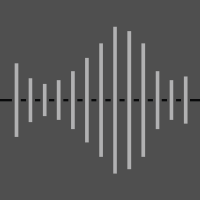Topic Editors


Advances in Underwater Acoustics and Aeroacoustics

Image courtesy of Dr. Claudio Testa
Topic Information
Dear Colleagues,
It is our great pleasure to announce a new Topic titled “Advances in Underwater Acoustics and Aeroacoustics”. Noise pollution impacts people and mammals, and the increased use of high-performance engines for ships, aircrafts, helicopters, and drones has limited acoustic certification by the shipbuilding and air-vehicle manufacturing industries. In order to share your own experiences and challenges on new theoretical–numerical methodologies and experimental techniques in the field of noise prediction, measurement, and control, the present Topic aims to bring together first-class articles on experiments and the modelling of sound generation and propagation mechanisms in free-space or in the presence of scattering phenomena for marine and aeronautical configurations. This Topic is expected to attract widespread attention and will have an excellent impact on the field of aero/hydro-dynamically generated sound. It will include (but is not limited to) the following:
- Propeller noise;
- Rotor noise;
- Jet noise;
- Acoustic scattering;
- Far-field sound propagation;
- Sound source identification and location;
- Sound wave reconstruction;
- Noise mitigation;
- Noise cancellation;
- Noise signal decoupling.
Dr. Claudio Testa
Prof. Dr. Giovanni Bernardini
Topic Editors
Keywords
- aeroacoustics
- hydroacoustics
- noise modelling
- noise measurements
- noise control techniques
- far-field noise propagation
Participating Journals
| Journal Name | Impact Factor | CiteScore | Launched Year | First Decision (median) | APC | |
|---|---|---|---|---|---|---|

Acoustics
|
1.3 | 3.7 | 2019 | 19.4 Days | CHF 1600 | Submit |

Aerospace
|
2.1 | 3.4 | 2014 | 24 Days | CHF 2400 | Submit |

Applied Sciences
|
2.5 | 5.3 | 2011 | 17.8 Days | CHF 2400 | Submit |

Journal of Marine Science and Engineering
|
2.7 | 4.4 | 2013 | 16.9 Days | CHF 2600 | Submit |

Remote Sensing
|
4.2 | 8.3 | 2009 | 24.7 Days | CHF 2700 | Submit |

Vehicles
|
2.4 | 4.1 | 2019 | 24.7 Days | CHF 1600 | Submit |

Modelling
|
1.3 | 2.7 | 2020 | 21.2 Days | CHF 1000 | Submit |

MDPI Topics is cooperating with Preprints.org and has built a direct connection between MDPI journals and Preprints.org. Authors are encouraged to enjoy the benefits by posting a preprint at Preprints.org prior to publication:
- Immediately share your ideas ahead of publication and establish your research priority;
- Protect your idea from being stolen with this time-stamped preprint article;
- Enhance the exposure and impact of your research;
- Receive feedback from your peers in advance;
- Have it indexed in Web of Science (Preprint Citation Index), Google Scholar, Crossref, SHARE, PrePubMed, Scilit and Europe PMC.

